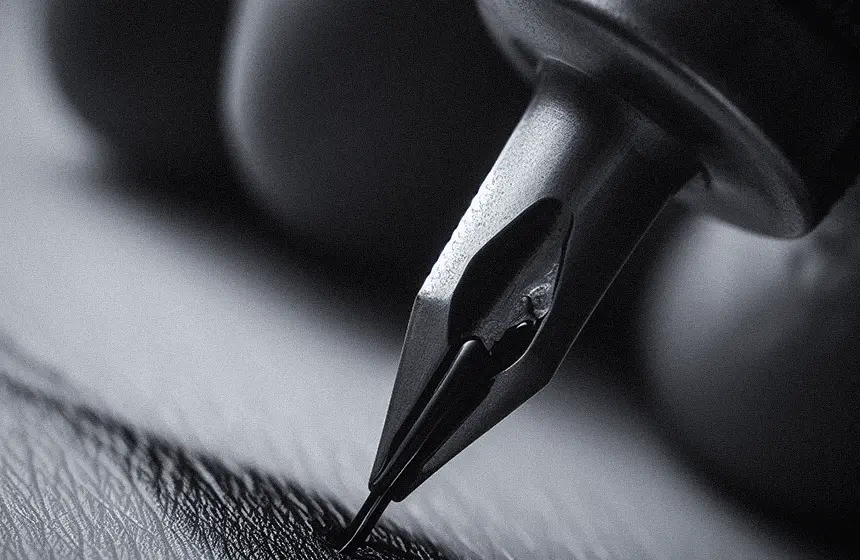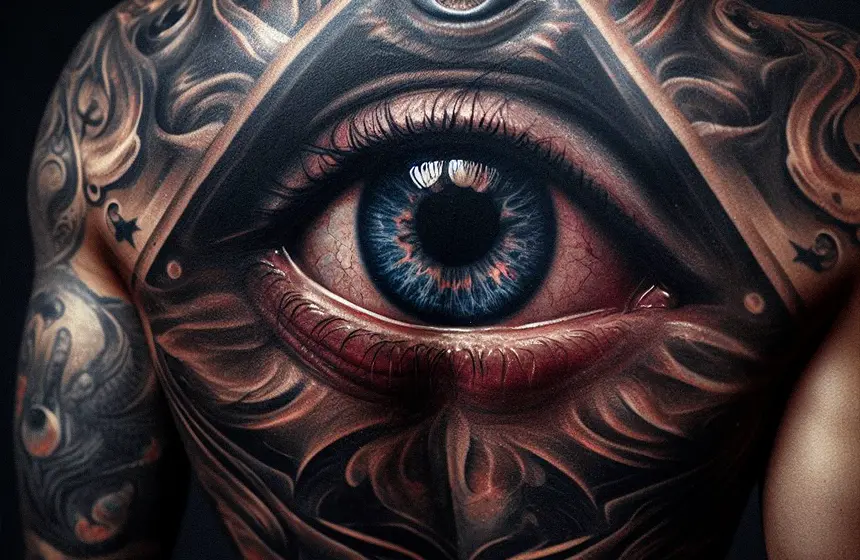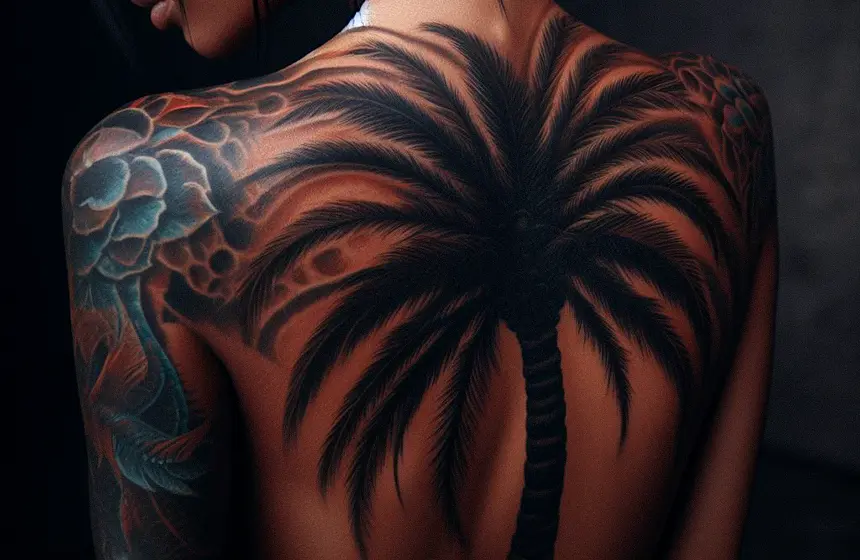How deep does a tattoo needle go?
As you’re about to immerse yourself skin-deep into the world of tattooing, have you ever pondered the precise depth that buzzing needle reaches within your skin? Or perhaps you’ve questioned which needles are responsible for creating the perfect shades and lines?
You’ll get an insider’s look at the science of tattoo ink, the importance of needle depth, and the crucial aftercare steps.
So, buckle up – we’re exploring the nitty-gritty of this unique art form.
Let’s demystify the process behind your body’s most permanent form of self-expression.
Table of Contents
How Deep Does a Tattoo Needle Go?
When you get a tattoo, the needle doesn’t go deep into your skin. It only goes about 1-2 millimetres, which is 1/16th of an inch. That’s not very far. It goes through five layers of the top part of your skin and into the layer right below it called the dermis.
Understanding Tattoo Process and Equipment
Understanding the tattoo process and equipment is crucial when planning to get inked, as it’s not just about the artistic design but also about the technical aspects that make a tattoo successful.
You need to appreciate the complexity of the tattoo machine technology, which performs up to 6000 tiny movements per second, using electromagnetic coils and vacuum-seal technology to ensure precision and minimize pain.
Then, there’s the matter of the different types of tattoo needles, which should be more noticed. From the fine liners for intricate details to the larger shaders for filling in areas, each has a specific role. The needle deposits ink beneath your skin, creating the design that you’ve chosen.
The Role of Tattoo Ink

Diving into the role of tattoo ink, you’ll find it’s more than just a colourful substance; it transforms a simple needle prick into a permanent piece of art on your skin.
The longevity of your tattoo ink plays a significant role in the outcome. The composition, typically a blend of pigments and carriers, ensures the ink remains vibrant and steadfast beneath your skin’s surface.
Carriers, such as ethyl alcohol or distilled water, help transport the pigment from the needle to your skin. In contrast, pigments give your tattoo its distinct colour.
Understanding the role of tattoo ink in your body art won’t only enhance your appreciation for the craft. Still, it can also guide you in making informed decisions about your next piece.
Tattoo Needle Depth and Impact

When you’re getting a tattoo, the needle goes roughly 1/16th of an inch into your skin, a depth that’s crucial for the longevity and appearance of your tattoo. This depth, known as tattoo needle depth: accuracy and technique, allows the ink to settle into the dermis, the second layer of your skin.
Penetrating this layer ensures your tattoo’s durability, as the cells here are more stable than those in the outer layer, the epidermis. Achieving optimal depth: factors to consider include needle type, skin elasticity, and the artist’s technique. Striking the right balance is critical.
If it is too shallow, your tattoo fades or blurs quickly. If it is too deep, you risk scarring and unnecessary pain. Hence, tattooing is a blend of precision, knowledge, and skill.
Potential Risks and Complications
While you may be keen on getting that perfect tattoo, it’s vital to remember that misjudging the needle’s depth can bring about a host of complications. Risks include incorrect ink deposition, which might affect the tattoo’s longevity.
The needle penetrating too deep might cause unnecessary bleeding, increased pain, and even lead to health issues. In worst-case scenarios, it could lead to an infection if the needle inadvertently reaches the hypodermis.
Understanding these risks highlights the importance of aftercare in the healing process. Proper cleaning, moisturizing, and protective measures can aid in the prompt and efficient healing of your tattoo.
It’s vital to remember that the beauty and permanence of your tattoo are contingent upon the precise control of needle depth and your diligent aftercare.
The Importance of Tattoo Aftercare
After understanding the potential risks associated with a tattoo, you must appreciate the importance of diligent aftercare in promoting a healthy, long-lasting tattoo.
The first few weeks following the procedure are critical. Following tattoo aftercare tips can result in a vibrant, infection-free tattoo. Healing tattoo products, including unscented, alcohol-free moisturizers, can aid recovery.
Avoid exposure to direct sunlight and refrain from submerging the tattoo in water. Please keep it clean, but don’t overdo it. Excessive cleaning can irritate the skin and delay healing. Don’t pick at scabs, as this can lead to ink loss and scarring.
Frequently Asked Questions
-
What Are Some of the Early Signs That a Tattoo Needle May Have Gone Too Deep?
If you’re experiencing excessive bleeding, severe pain, or swelling post-tattoo, it’s possible the needle went too deep. Remember, proper aftercare is crucial, and always ensure needle sterilization to prevent infection.
-
What Materials Are Typically Used in the Manufacturing of Tattoo Needles, and Why?
If you’re experiencing excessive bleeding, severe pain, or swelling post-tattoo, it’s possible the needle went too deep. Remember, proper aftercare is crucial, and always ensure needle sterilization to prevent infection.
-
How Does the Size of the Tattoo Needle Affect the Final Outcome of the Tattoo?
The size of your tattoo needle directly affects the outcome. Larger needles create bold lines, while smaller ones offer finer detail. Needle sanitization is crucial, as it impacts the tattoo healing process significantly.
-
Does the Color of Tattoo Ink Affect the Depth at Which the Needle Needs to Go?
No, the colour of tattoo ink doesn’t affect needle depth. Regardless of ink colour, it’s crucial to monitor for ink allergies and ensure needle sterilization to maintain a safe, hygienic tattooing process.
-
Can the Pain Felt During the Tattooing Process Be Linked to the Needle Depth?
Your pain during tattooing can be influenced by needle depth. Proper needle hygiene and adept tattooing techniques are crucial to minimize discomfort. A deeper needle might cause more pain, but it’s necessary for lasting ink.
Conclusion
So, that’s the skinny on tattooing.
Your skin, a canvas, endures a dance of needle pricks, depositing ink precisely. The needle dives just 1-2mm deep, with the depth, type, and size impacting the result.
Remember, potential risks are present, so choose your artist wisely. But don’t fret. Proper aftercare ensures your tattoo heals well, preserving your personal expression.
Now that you’re versed in the process, you can transform your body into a masterpiece.





